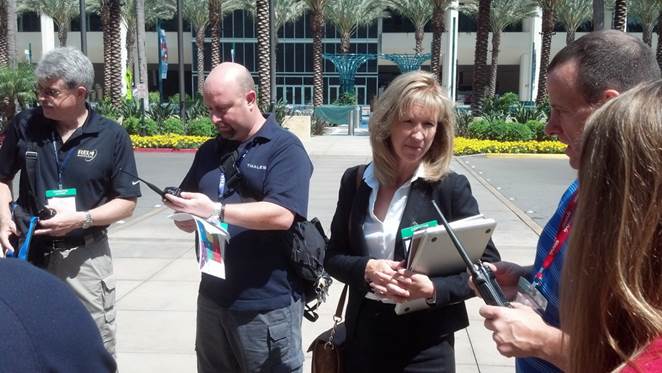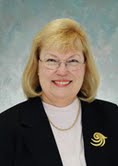Radio Programming Compatibility Requirements (PCR) Working Group Test at APCO Is a Huge Success: Many radio vendors have unique software packages that require in-depth technical knowledge to program a radio. In 2011 during a serious incident, Pinellas County, FL, called on their neighboring jurisdiction for assistance. When then-communications manager, Pam Montanari tried to connect the Pinellas countywide Motorola trunked system with the Harris radios from an assisting jurisdiction, the two systems could not communicate. In response to this incident and to the public safety need for interoperable software that fills a gap between different vendor radio programming packages, NPSTC created the Radio Programming Compatibility Requirements (PCR) Working Group to tackle this problem. The Working Group developed a spreadsheet and asked Project 25 vendors to provide information on the fields necessary to create a standard way to export and exchange basic programming.
On August 20, 2013, at the Association of Public Safety Communications Officials – International (APCO) Annual Conference, the Working Group successfully programmed disparate radio systems enabling them to talk, using the spreadsheet information. Working Group Chair Pam Montanari said she was very pleased with the success of the spreadsheet testing. Paul Roberts, Division Chief Special Operations, Boise Fire Department, and a Working Group Participant, echoed her comments, saying, “This was a very successful meeting today, the demo and proof of concept were really exciting,” adding, “The Working Group, users, and vendors, really have come together to produce a much-needed tool. I’m honored to be part of this passionate group. The payoff is right around the corner.”
Participants in the test, Harris Public Safety and Professional Communications (PSCR), Icom America, Motorola Solutions, Relm Wireless, Tait Communications, and Thales Communications, joined by public safety participants, tested and confirmed that their radios could recognize different manufacturers’ programming feature sets.
AASHTO and APCO Present Awards for Service to Public Safety: NPSTC’s Executive Director and founding member, Marilyn Ward, and Chief Harlin McEwen, representing the International Association of Chiefs of Police (IACP), both received the President’s Award at the APCO conference in Anaheim, CA.
The American Association of State Highway and Transportation Officials (AASHTO’s) Special Committee on Wireless Communication Technologies, meeting in Irvine, CA, also presented awards to Ms. Ward and Chief McEwen, NPSTC, for their service to public safety communications.



